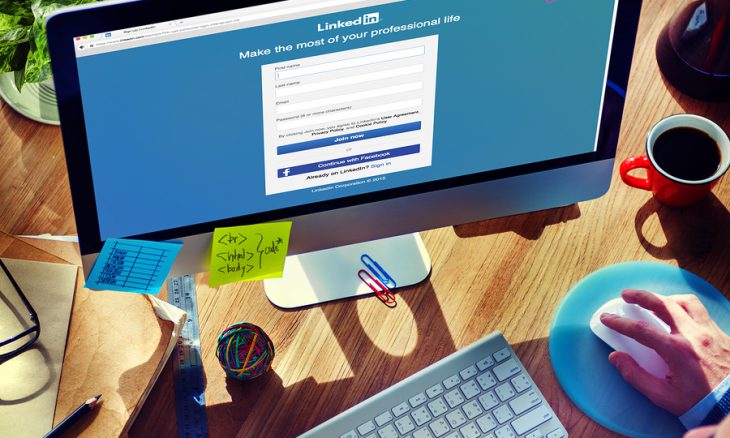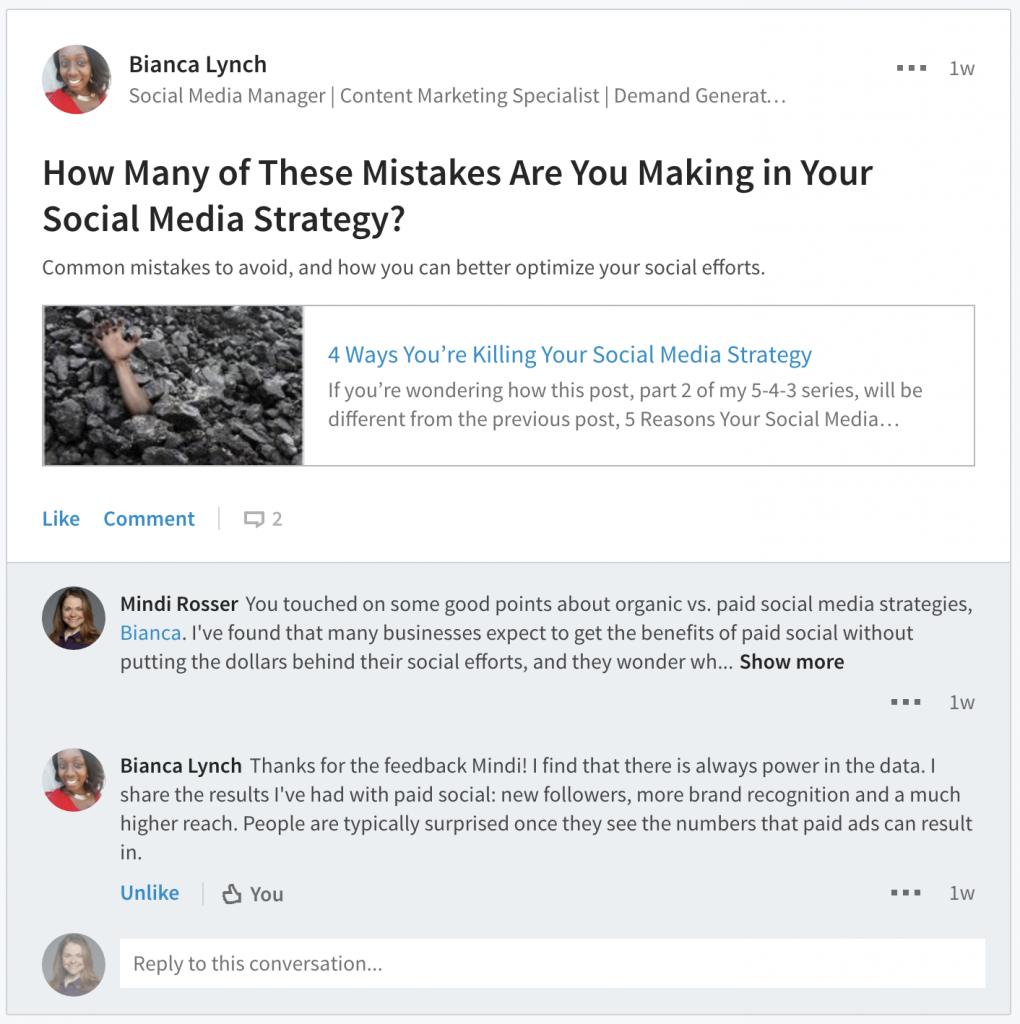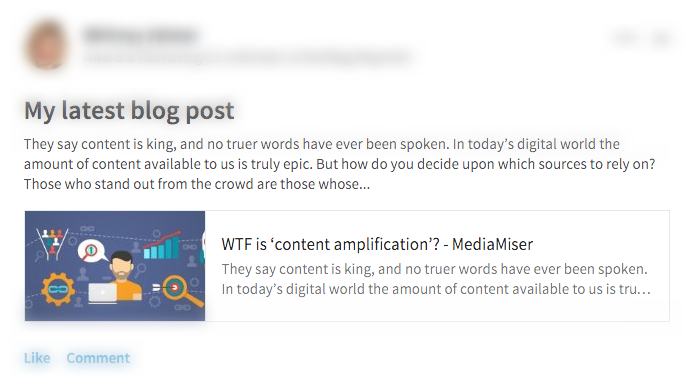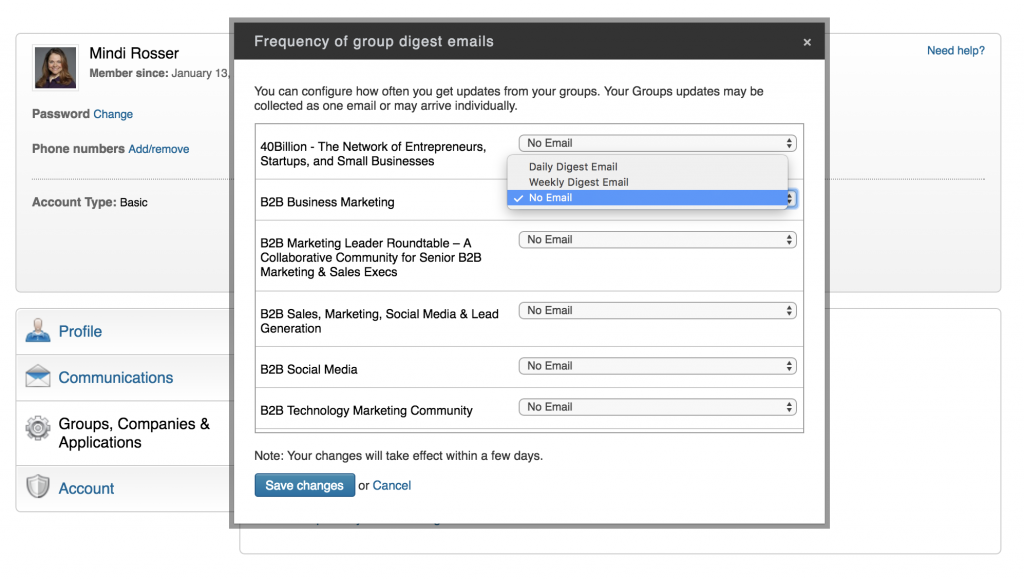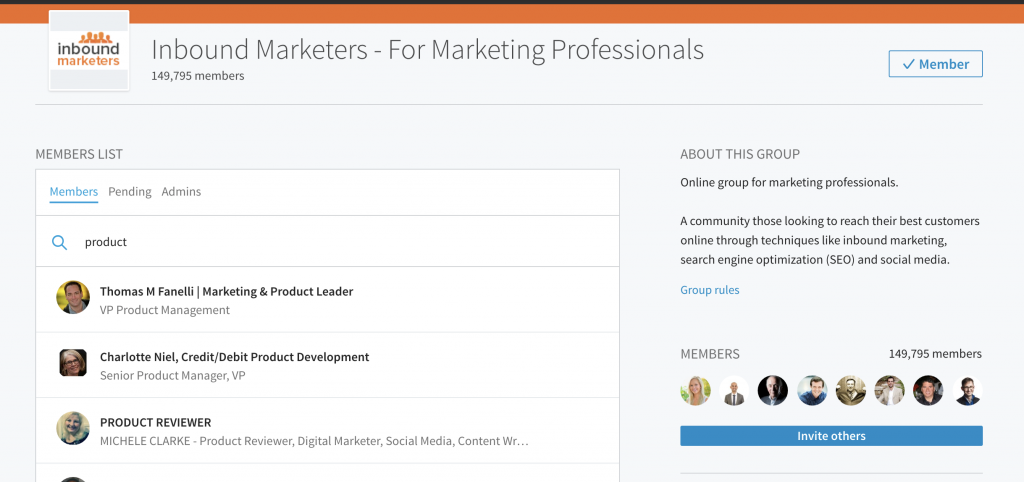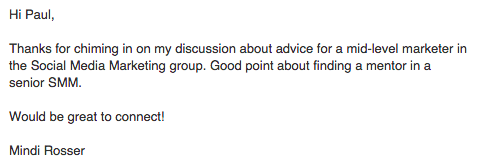After all of the changes LinkedIn has made to groups, it’s no wonder LinkedIn users and social selling experts are questioning the value of LinkedIn groups for sales and marketing programs. It makes you wonder if LinkedIn groups will experience the same fate as Google+ Communities, deserted after members go elsewhere for relevant discussions and cutting-edge content?
What happened to LinkedIn groups?
LinkedIn groups began as forums centered around communities asking and answering insightful questions to learn from each other. With the rise of content marketing, many zealous marketers began clogging the discussions stream with self-promotional links to landing pages, white papers, and webinars. Unmoderated groups morphed into spammy blog feeds with real discussions being buried. On the other hand, the best LinkedIn groups discovered how to moderate discussions, minimize spam, and foster on-topic discussions among members.
Social sellers started using LinkedIn groups as a way to spam group members with unsolicited sales pitches. They neglected to follow protocol: send a connection request, gauge the prospect’s interest, and then send an appropriate follow-up message. LinkedIn has addressed this issue by limiting LinkedIn users to a total of 15 free 1:1 messages per month. This dramatically slowed down the number of uninvited sales messages sent to group members.
Are LinkedIn groups still worth your time?
The LinkedIn groups user interface would benefit from a makeover, but LinkedIn groups can still be one of the best places to actively prospect, connect with like-minded professionals, and learn from industry thought leaders.
If you want to make the most of your groups, you should first identify the best LinkedIn groups for your goals, and then effectively navigate and participate in your high-value groups.
Participating in LinkedIn groups is one of my preferred ways to engage with prospects, industry peers, and subject matter experts. Because LinkedIn is a professional social network, interactions within LinkedIn groups are different than the more personal Facebook groups or casual Twitter chats.
Now that we’ve established the value in LinkedIn groups, here are my three best practices for using LinkedIn groups effectively, connecting with the right people in groups, and becoming a well-respected group member.
1. Post discussions consistently
Become an active participant by sharing regular, relevant posts with your groups. To be considered a regular contributor, share a discussion with your groups every one or two weeks, depending on the activity level of each group.
I would caution you against using too much automation when sharing discussion. Avoid mass-blasting the same blog article, discussion title, and description to ALL of your groups. Steer clear of social scheduling tools and post discussions manually.
Personalize each discussion based on the focus of that LinkedIn group and the group members (seniority, subject matter expertise, industry). Follow each group’s rules before submitting a discussion.
Use the discussion area to ask questions of group members as a smart way to spark comments and learn from other subject matter experts.
Here’s a good example of a well-crafted discussion:
Here’s an example of a spammy, self-promotional discussion:
Summed Up: Don’t post spam. Don’t post the same discussion in all groups. Follow the group’s rules. Stick to the subject matter of each group.
2. Monitor groups weekly
Visit each of your high priority groups on LinkedIn with the intention of commenting on others’ discussions on a weekly basis. Commenting within your groups is just as important as posting your own discussions. When you fail to comment on other group members’ discussions, your discussions often are ignored by group members. Group members expect each other to post relevant discussions and comment on discussions. It’s how a thriving community works.
When you do leave a comment, mention the group member (by tagging them with the @ sign) who posted the discussion. Then provide an insightful, unique point of view on the discussion. Generic comments like, “Awesome!” are worthless. And please do not use the comment box as a place for blatant self-promotion.
Here’s an example of a what-not-to-do comment:
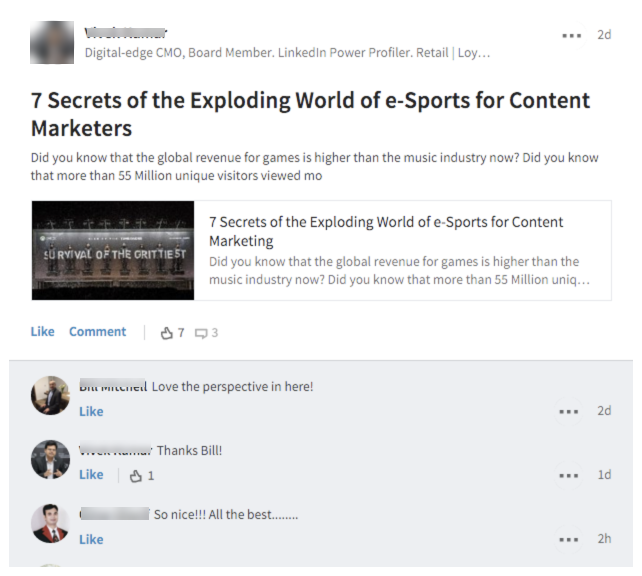
Monitoring your groups can take a good amount of time each week. I pick my top 8-10 groups and monitor these on an almost daily basis. As for my other groups, I subscribe to the weekly update email to ensure I don’t miss any relevant discussions.
Here’s how you can adjust your settings in each group to get the weekly or daily update email:
Summed Up: Comment regularly in your high priority groups while monitoring the others less frequently. Always provide value when you comment. Engaging with a comment is one of the best ways to support your groups.
3. Connect with members
Pay attention to group members—especially potential prospects—who are actively participating in groups and look for ways to interact with them inside the group and then connect with them.
A great benefit of LinkedIn groups is interacting with people outside your network who should become part of your network. Group members are able to search the group membership by job titles or keywords, which can help you find ideal prospects. Actively posting and commenting in your groups helps you gain visibility you would not otherwise have inside the group.
When you are an active group member, you will receive connection requests and LinkedIn messages from other members because you are regularly providing value to the group. I’ve made some of my most valuable professional connections from those within my LinkedIn groups because I am a visible group member, comment regularly, and follow up with those who comment on my discussions.
You can also take a more proactive approach to connecting with group members, but be cautious not to appear too eager to connect. The easiest way to make a connection (that I’ve found) is to comment on a trending discussion and then send a personalized connection request to other commenters. Active group members enjoy connecting with other participants. Win-win.
Here’s a good example of a personalized connection request:
Summed Up: Be authentic. Look at the profiles of potential connections to ensure they are a good fit. Don’t send generic connection requests.
Are you using LinkedIn groups to connect with prospects or increase brand awareness? If so, which of these tactics could you incorporate into your LinkedIn groups strategy?

